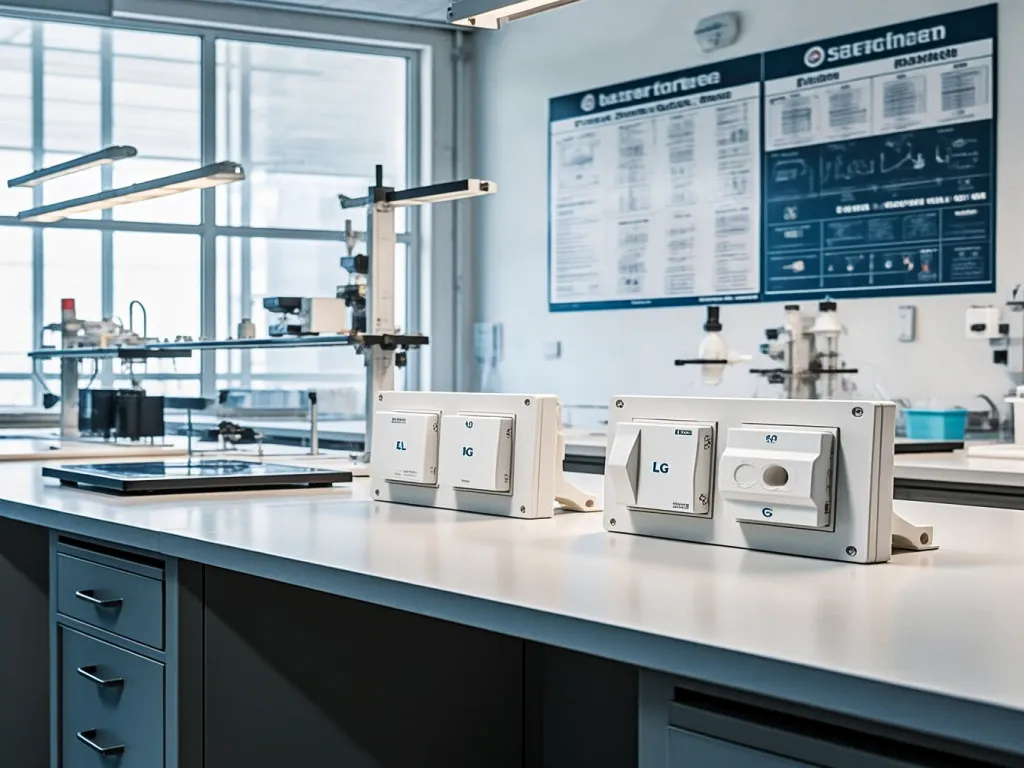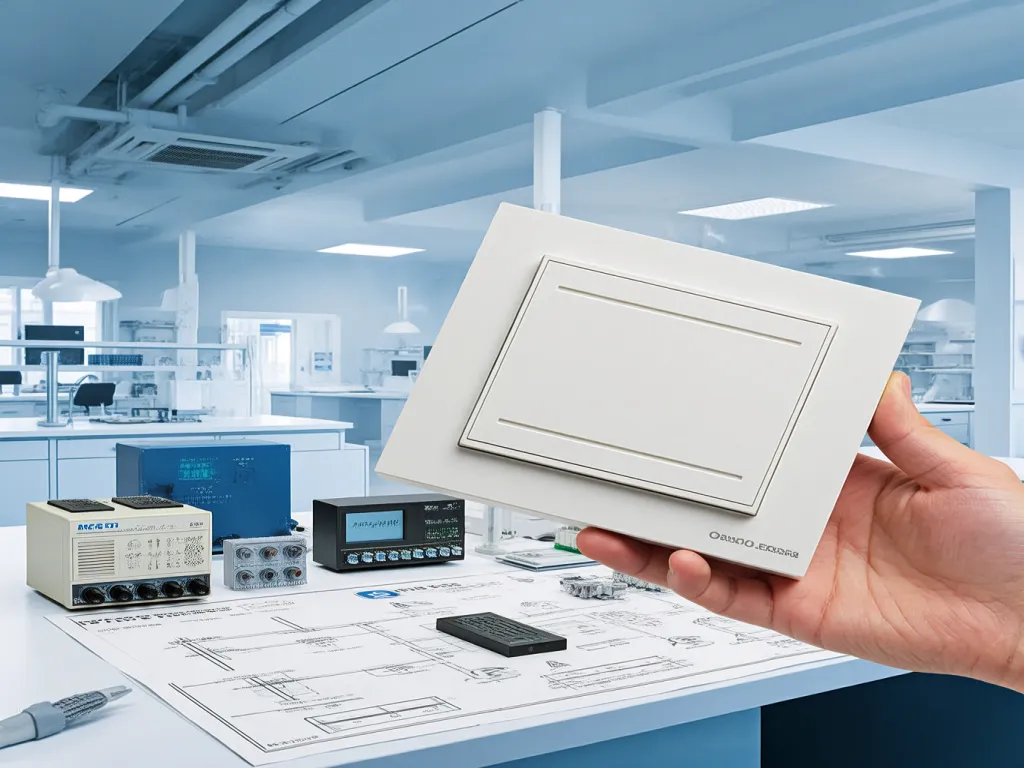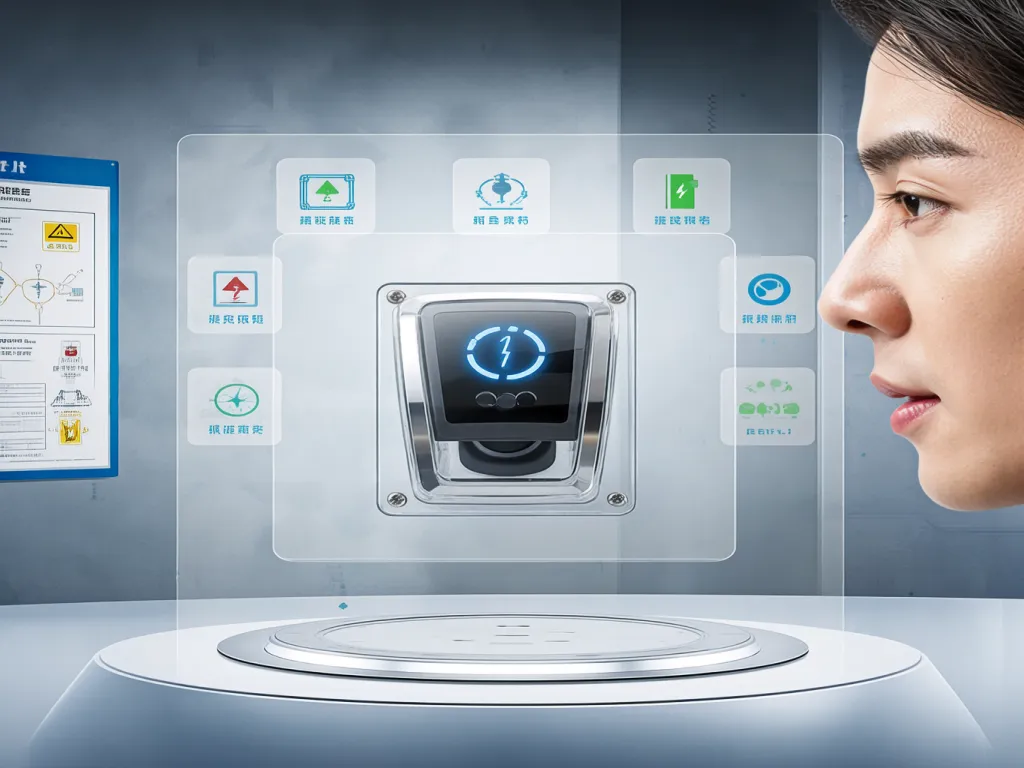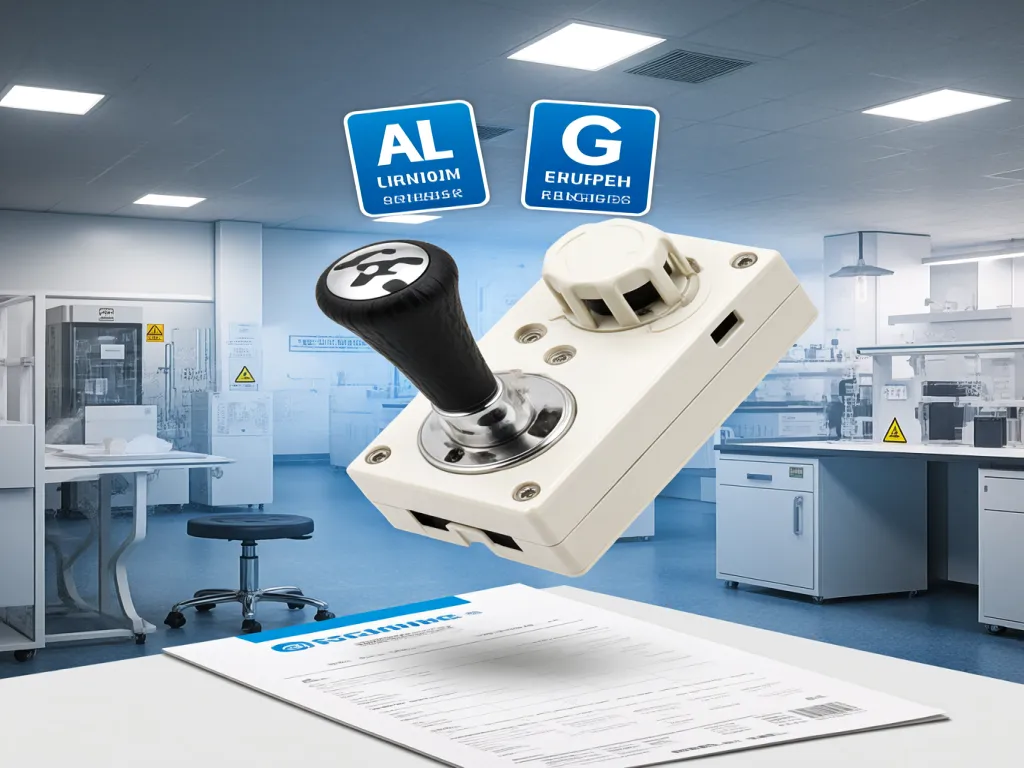Safety First: Picking the Right Rocker Switch Panel
Navigating the world of electronics, especially when it comes to safety-critical components like the rocker switch panel, can be daunting. Have you ever wondered how to ensure your device’s safety isn’t compromised by a subpar switch? Let’s dive into the essentials of selecting a rocker switch panel that meets stringent safety standards, ensuring your peace of mind and the longevity of your equipment.

Safety Standards Overview: Introducing International and Domestic Safety Standards for Rocker Switch Panels, Such as UL and CE
When it comes to selecting a rocker switch panel for your electronic devices, safety isn’t just a buzzword—it’s a necessity. Imagine plugging in a new device, only to have it short – circuit or overheat because the switch panel didn’t meet basic safety standards. Scary, right? That’s why understanding and adhering to international and domestic safety standards for rocker switch panels is crucial. Let’s dive into some of the most recognized safety standards out there: UL and CE.
First up, let’s talk about UL, which stands for Underwriters Laboratories. This is a globally recognized safety certification company based in the United States. UL standards are rigorous and cover a wide range of products, including rocker switch panels. When a rocker switch panel has a UL mark, it means it has undergone extensive testing for safety risks like electrical shock, fire hazards, and mechanical failures. For instance, UL tests ensure that the switch can handle the specified voltage and current without overheating or causing electrical arcs that could lead to fires. It’s like having a safety inspector give your switch panel a thorough check – up before it hits the market.
Now, let’s cross the Atlantic and look at CE marking. CE stands for Conformité Européenne, which is French for ‘European Conformity.’ This isn’t a safety standard per se but a certification mark that indicates a product complies with EU safety, health, and environmental requirements. For rocker switch panels, CE marking means the product meets the Low Voltage Directive (LVD) and the Electromagnetic Compatibility (EMC) Directive. The LVD ensures that electrical equipment within a certain voltage range is safe to use, while the EMC Directive makes sure the equipment doesn’t emit harmful electromagnetic interference. So, if you’re selling in the EU market, a CE – marked rocker switch panel is a must – have.
But wait, there’s more! Different countries and regions may have their own specific safety standards. For example, in China, there’s the CCC (China Compulsory Certificate) mark. This is similar to UL and CE in that it indicates a product meets Chinese safety and quality requirements. A rocker switch panel with a CCC mark has been tested for electrical safety, fire resistance, and other relevant factors according to Chinese standards.
You might be wondering, ‘Why are there so many different standards?’ Well, each region has its own unique electrical systems, environmental conditions, and safety concerns. For instance, the voltage and frequency of electrical supply vary across countries. In the US, it’s 120V and 60Hz, while in most of Europe, it’s 230V and 50Hz. So, a rocker switch panel designed for one region might not be safe or efficient in another. That’s why having region – specific safety standards makes sense.
As a merchant, engineer, or end – user, how do you ensure the rocker switch panel you choose meets all these standards? The key is to look for products that are certified by multiple recognized bodies. A rocker switch panel with both UL and CE marks, for example, is likely to meet high safety standards globally. Also, don’t be afraid to ask the manufacturer for test reports and certification documents. A reputable manufacturer will be happy to provide these to prove their product’s safety and quality.
In a nutshell, understanding and adhering to international and domestic safety standards for rocker switch panels is essential for ensuring the safety of your electronic devices. Whether it’s UL in the US, CE in Europe, or CCC in China, these standards act as a safety net, protecting you from potential electrical hazards. So, next time you’re shopping for a rocker switch panel, make sure to check for those important safety marks!

UL Standards: A Deep Dive
UL standards for rocker switch panels are comprehensive. They cover aspects like electrical insulation, which ensures that the switch doesn’t conduct electricity to the user accidentally. The standards also test for the switch’s ability to withstand repeated use without malfunctioning. For example, a UL – certified rocker switch panel must be able to handle thousands of on – off cycles without losing its functionality or becoming a safety risk. This is especially important in industrial settings where switches are used frequently.
CE Marking: European Safety Assurance
The EMC Directive under CE marking is crucial for rocker switch panels. In today’s world, where electronic devices are everywhere, electromagnetic interference can be a big problem. A rocker switch panel that complies with the EMC Directive ensures that it doesn’t disrupt the operation of other nearby electronic devices. For instance, in a hospital setting, where there are many sensitive medical devices, a CE – marked rocker switch panel can prevent interference that could affect patient care.
Regional Standards: Beyond UL and CE
In addition to UL, CE, and CCC, there are other regional standards. In Japan, for example, there’s the PSE (Product Safety Electrical Appliance & Material) mark. This mark indicates that the product meets Japanese safety standards for electrical appliances. A rocker switch panel with a PSE mark has been tested for safety in the Japanese electrical environment, which has its own unique characteristics like a different voltage and frequency compared to other regions.

Safety Feature Analysis: Essential Safety Traits for Rocker Switch Panels
When it comes to selecting a rocker switch panel, safety should always be at the forefront of your considerations. After all, these panels are integral components in various electrical systems, controlling the flow of power and ensuring smooth operations. But how do you ensure that the rocker switch panel you choose is truly safe? Let’s dive deep into the essential safety features that every rocker switch panel should possess.
First and foremost, over – load protection is a must – have. Imagine a scenario where your electrical system demands more power than the rocker switch panel can handle. Without over – load protection, the panel could overheat, leading to potential fires or damage to connected devices. Over – load protection works by automatically cutting off the power supply when the current exceeds a safe level. This prevents excessive current from flowing through the panel, safeguarding both the panel itself and the downstream equipment. It’s like having a built – in safety net that kicks in when things start to get too hot, quite literally!
Next up, short – circuit protection is equally crucial. A short circuit occurs when there’s an unintended low – resistance path for the current to flow, bypassing the normal load. This can cause a sudden surge of current, which can be extremely dangerous. Short – circuit protection in a rocker switch panel detects such abnormal current flows and quickly interrupts the circuit. By doing so, it prevents damage to the panel, wiring, and connected devices, reducing the risk of electrical fires and other hazards. It’s the panel’s way of saying, ‘Hey, something’s not right here, and I’m going to stop this before it gets out of hand!’
Another important safety feature is arc fault protection. Arc faults are electrical discharges that can occur when there’s a break in the insulation or a loose connection. These arcs generate intense heat, which can ignite surrounding materials and start fires. Rocker switch panels with arc fault protection are designed to detect these arcs and shut off the power immediately. This feature is especially valuable in residential and commercial settings where electrical fires can have devastating consequences. It’s like having a vigilant guardian watching over your electrical system, ready to act at the first sign of trouble.
In addition to these electrical protection features, a well – designed rocker switch panel should also have physical safety features. For instance, the panel should be made of durable, fire – resistant materials. This ensures that even in the event of a fire, the panel won’t contribute to the spread of flames. The switches themselves should be designed to prevent accidental activation. This can be achieved through features like recessed switches or covers that require a deliberate action to operate. For example, a 15A 220V mini rocker switch might incorporate such design features. After all, you don’t want someone to accidentally turn on or off a critical circuit, potentially causing disruptions or even safety hazards.
Moreover, proper labeling and markings on the rocker switch panel are essential for safety. Clear labels indicating the function of each switch, the voltage rating, and any safety warnings can help users operate the panel correctly. This reduces the risk of misuse and ensures that everyone who interacts with the panel understands its purpose and limitations. It’s like having a user – friendly manual right on the panel itself, guiding users through safe and efficient operation.
Now, you might be wondering, ‘How do I know if a rocker switch panel has all these safety features?’ Well, that’s where certifications and testing come into play, which we’ll discuss in the next section. But for now, just remember that when you’re shopping for a rocker switch panel, don’t just look at the price or the aesthetics. Dig deeper and check for these essential safety features. Your peace of mind and the safety of your electrical system depend on it!
Over – load Protection in Detail
Over – load protection is a critical safety feature in rocker switch panels. It’s designed to prevent the panel from being overwhelmed by excessive current. When the current flowing through the panel exceeds its rated capacity, the over – load protection mechanism kicks in. This can be in the form of a thermal or magnetic trip. A thermal trip occurs when the heat generated by the excessive current causes a bimetallic strip to bend and open the circuit. A magnetic trip, on the other hand, is triggered by the magnetic field generated by the high current, which pulls a lever to open the circuit. Both methods are effective in cutting off the power supply and preventing damage. Some advanced rocker switch panels may even have adjustable over – load settings, allowing you to customize the protection level based on your specific electrical requirements.
Short – Circuit Protection Mechanisms
Short – circuit protection is all about detecting and responding to abnormal current flows. In a rocker switch panel, this is typically achieved through the use of fuses or circuit breakers. Fuses are simple devices that contain a thin wire or element. When a short circuit occurs and the current surges, the wire melts, breaking the circuit and stopping the current flow. Circuit breakers, on the other hand, are more sophisticated. They use electromagnetic or thermal – magnetic tripping mechanisms to detect short circuits. Once a short circuit is detected, the circuit breaker trips and opens the circuit. Unlike fuses, circuit breakers can be reset after they trip, making them more convenient for repeated use. Some high – end rocker switch panels may also incorporate solid – state short – circuit protection, which uses electronic components to detect and interrupt short circuits quickly.
Arc Fault Protection Technology
Arc fault protection is a relatively newer but highly important safety feature in rocker switch panels. Arc faults can be difficult to detect as they may not cause a significant increase in current like a short circuit. However, they generate intense heat and can easily start fires. Rocker switch panels with arc fault protection use advanced sensors to detect the unique electrical signatures of arcs. These sensors can identify the high – frequency components and the characteristic waveforms of arcs. Once an arc is detected, the protection system quickly interrupts the circuit, preventing the arc from causing damage. Some arc fault protection devices also have self – testing capabilities, ensuring that they are functioning properly at all times.

Certification and Testing: The Importance of Choosing Authorized and Inspected Rocker Switch Panels
When it comes to electrical components, safety isn’t just a buzzword—it’s a critical factor that can make or break the reliability of your entire system. For rocker switch panels, which control the flow of electricity in various applications, choosing products that have undergone rigorous certification and testing is non-negotiable. But why is this so important, and how can you ensure you’re making the right choice?
Let’s start with the basics: certification and testing are processes designed to verify that a product meets specific safety and performance standards. These standards are set by international bodies and regulatory agencies to ensure that electrical components like rocker switch panels are safe to use in different environments. Without proper certification, you’re essentially gambling with the safety of your equipment, your workspace, and even your life.
So, what makes certification and testing so crucial? For starters, they provide assurance that the rocker switch panel you’re using has been evaluated for potential hazards, such as electrical shock, fire, or overheating. Certified products have undergone a series of tests that simulate real-world conditions, ensuring they can withstand the rigors of daily use without compromising safety. This is especially vital for rocker switches with overload protection, as they are designed to handle higher electrical loads safely.
Moreover, certification and testing help you avoid legal and financial repercussions. In many countries, using non-certified electrical components is illegal and can result in hefty fines or even the shutdown of your operations. By choosing certified rocker switch panels, you’re not only protecting yourself but also complying with local regulations and industry standards.
Now, let’s talk about the key players in the certification and testing arena. One of the most recognized certification bodies is UL (Underwriters Laboratories), a global safety consulting and certification company. UL certifies products for safety in over 100 countries, making it a trusted name in the industry. When you see the UL mark on a rocker switch panel, you can be confident that it has met stringent safety requirements.
Another important certification is CE (Conformité Européenne), which is mandatory for products sold within the European Economic Area (EEA). The CE mark indicates that a product complies with EU safety, health, and environmental requirements. For rocker switch panels, this means they have been tested and approved for use in European markets.
But certification is just one part of the equation. Testing methods are equally important in ensuring the safety and reliability of rocker switch panels. One common testing method is the dielectric strength test, which measures a product’s ability to withstand high voltage without breaking down. This test is crucial for rocker switch panels, as they often handle significant electrical loads.
Another testing method is the temperature rise test, which evaluates how much a product heats up under normal operating conditions. Overheating can lead to component failure or even fires, so this test is vital for ensuring the longevity and safety of rocker switch panels.
In addition to these tests, rocker switch panels may also undergo environmental testing, such as humidity and vibration tests, to ensure they can perform reliably in different conditions. These tests simulate the stresses that products may encounter during shipping, storage, or use, providing an extra layer of assurance.
So, how can you ensure that the rocker switch panel you’re considering has undergone proper certification and testing? The easiest way is to look for the certification marks mentioned earlier, such as UL and CE. These marks are usually displayed prominently on the product or its packaging. You can also check the manufacturer’s website or product documentation for detailed information about the certification and testing processes.
But don’t just stop at the certification marks. Take the time to understand what each certification entails and how it relates to your specific needs. For example, if you’re operating in a harsh industrial environment, you may want to look for rocker switch panels that have undergone additional environmental testing beyond the standard requirements, such as the IP65-rated rocker switches designed for such conditions.
In conclusion, choosing rocker switch panels that have undergone rigorous certification and testing is essential for ensuring the safety and reliability of your electrical systems. By understanding the importance of these processes and knowing how to identify certified products, you can make informed decisions that protect your equipment, your workspace, and your peace of mind. So, the next time you’re in the market for a rocker switch panel, remember: safety isn’t an option—it’s a requirement.
Why Certification Matters
Certification is your guarantee that a rocker switch panel has been thoroughly evaluated for safety and performance. It’s not just a piece of paper or a sticker—it’s a testament to the product’s ability to meet stringent standards set by industry experts. Without certification, you’re left guessing whether the product can handle the demands of your application, which is a risk you don’t want to take. For instance, products like the 15A overload protection circuit breaker switch are rigorously tested to ensure they meet these standards.
Key Certification Bodies
When it comes to certification, not all marks are created equal. UL and CE are two of the most respected names in the industry, but there are others as well, depending on your region and application. Familiarize yourself with the certification bodies relevant to your market and look for their marks on the products you’re considering. This will give you peace of mind knowing that the product has been vetted by experts.
Testing Methods Explained
Testing methods are the tools used to verify that a rocker switch panel meets the required standards. From dielectric strength tests to temperature rise tests, each method serves a specific purpose in ensuring the product’s safety and reliability. Understanding these tests can help you appreciate the level of scrutiny that certified products undergo and why they’re worth the investment. For example, the overload protection electronic rocker switch undergoes rigorous testing to ensure it can handle electrical surges safely.
Choosing a rocker switch panel that adheres to safety standards like UL and CE isn’t just a recommendation—it’s a necessity for safeguarding your devices and users. We’ve explored the critical safety features, from overload to short-circuit protection, and underscored the importance of certified products. Remember, safety is non-negotiable. Armed with this knowledge, you’re now equipped to make an informed decision. Why not share this guide with peers or explore our range of certified rocker switch panels to start your journey towards safer electronics?

